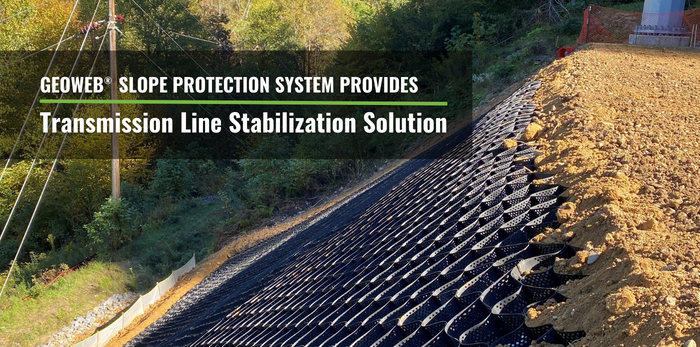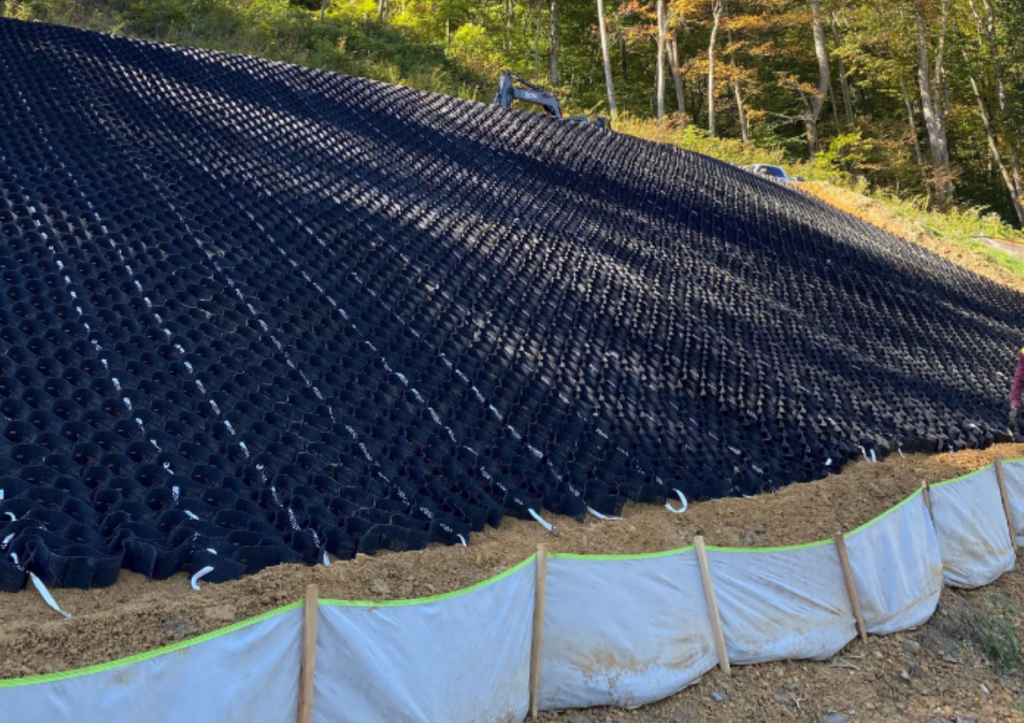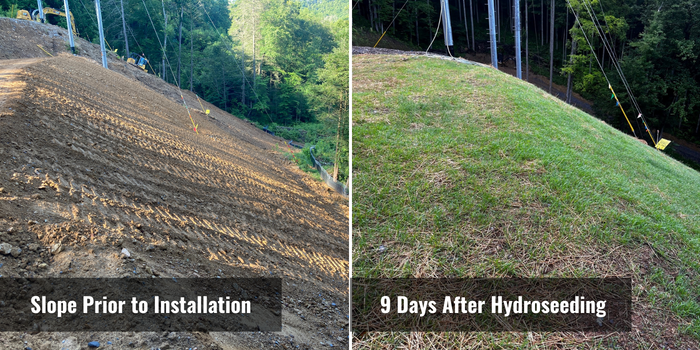
Transmission lines are integral to supplying power to homes and businesses throughout the country. Constructing these lines is a relatively simple process when traversing level terrain, but the construction is much more complicated when going through mountainous regions. Often at these locations, the hillside needs to be benched to create a level pad for the electrical transmission line tower foundations. The cutting of these slopes can lead to erosion if not properly mitigated, potentially endangering the long-term stability of the towers.
A major U.S. electric utility encountered these challenging terrains on three of their towers on a transmission line running through the Appalachian Mountains near Baileysville, WV. Parts of the tower pads were originally created using previously excavated material, but surficial sloughing at two of the sites occurred due to the steep slope angles and loosely placed materials. At the third location, they had similar issues with added complications due to water flow over the bench, which caused tension cracks along the steepest part of the bench.
A large national engineering consulting company chose the GEOWEB Slope Protection System, for their design citing the long-term erosion protection and resilience as the main reasons. Using Presto Geosystem’s Free Project Evaluation form, the geotechnical design engineer reached out to the Presto design team for assistance with product and anchoring selection. Prior to placing the GEOWEB system at each location, the contractor, Cook’s Excavating, had to excavate the slide material and replace it in 8-inch compacted lifts.
The area of concern at the first structure location consisted of 2:1 (26.5°) slopes with a maximum vertical height of 55 feet (123-foot slope length). The recommended solution was GW30V6 (6-inch depth) filled with topsoil, anchored with three TP-225 tendons (polyester strap with 5100 lb. break strength) per panel, and an ATRA® Tendon Clip tied to the tendons every sixth cell downslope. At the crest, the tendons were tied to a 6-inch diameter PVC pipe buried 4 feet below grade.


Have a job for us? Send us a message and we’ll get back to you as soon as we can. Thank you for your interest in Cook’s Excavating, LLC, and we hope we can provide our services to you!